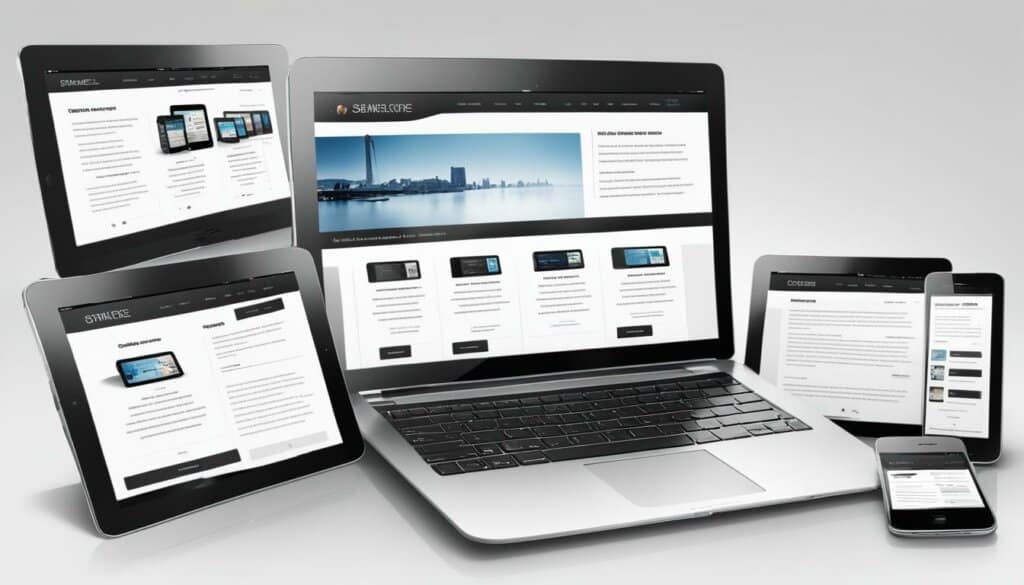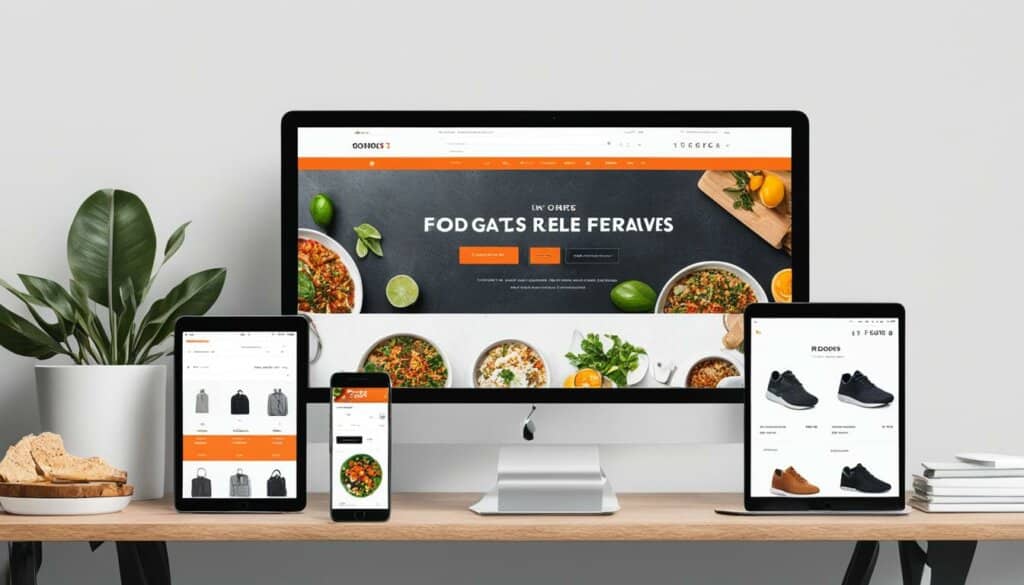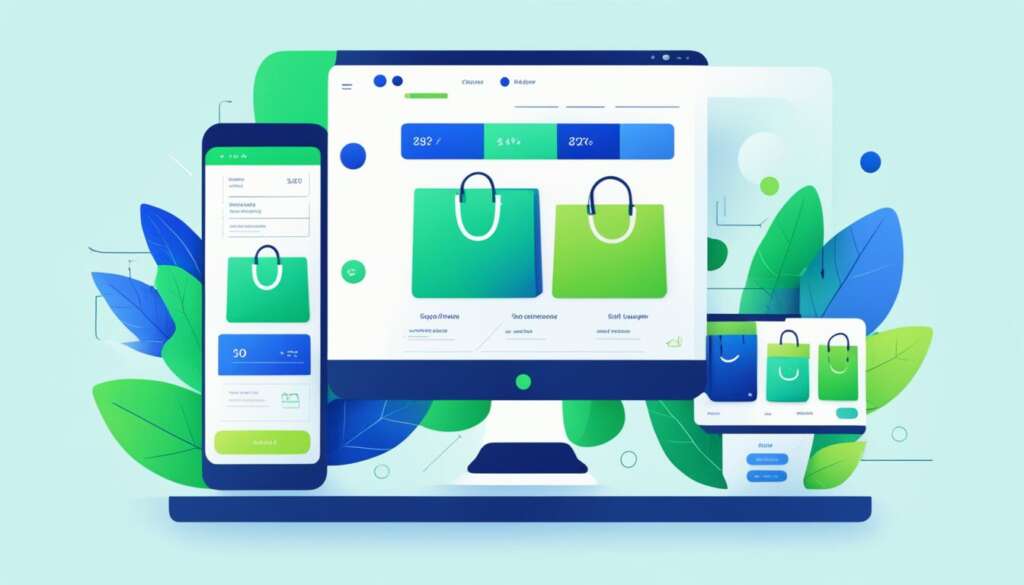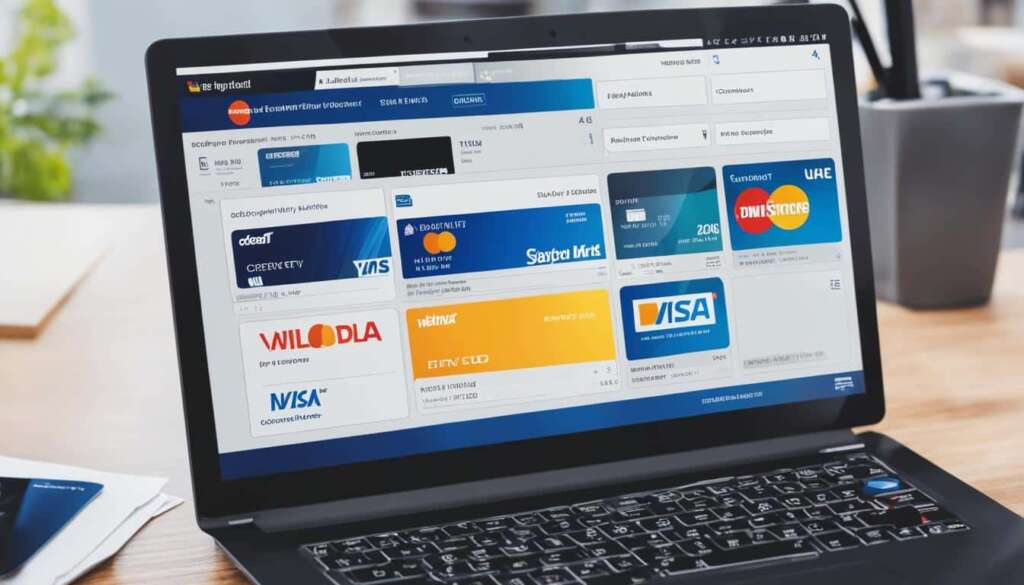Table of Contents
Today’s e-commerce website conversion rates are lower than most people realize, with the industry average hovering just under the 5% mark. To optimize your digital strategy and boost conversion rates, prioritizing good e-commerce website design is essential.
A seamless, personalized shopping experience that is fast, easy, and responsive across devices is key to engaging users and driving sales. Mobile functionality and responsive design are crucial, as mobile pages that load one second faster can experience up to a 27% increase in conversion rates.
Embracing the latest innovations in mobile payment options and optimized checkouts can also reduce cart abandonment and increase convenience for mobile shoppers.
The Importance of a Good Website Design
When people shop online, their only experience with your brand is your website, making good website design a top priority. A seamless, personalized shopping experience that is fast, easy, and as personalized as possible is crucial for engaging users and boosting conversion rates.
Nearly eight in 10 consumers would stop engaging with content that doesn’t display well on their device, emphasizing the importance of responsive design that works across every major device and operating system. Prioritizing mobile functionality is essential, as a one-second delay in page load time can decrease conversion rates by up to 7%.
Embracing innovations such as one-touch mobile payment options and optimized checkouts can further enhance the shopping experience and drive conversion rates.
Implementing a good ecommerce website design is key to creating a positive shopping experience for your customers and ultimately increasing your conversion rates. By focusing on responsive design, mobile functionality, and implementing convenience-enhancing features, you can ensure that your website engages users and encourages them to complete their purchase.
“Good web design is about creating a connection with your customers through an intuitive and visually appealing user experience. It’s the key to turning visitors into loyal customers.” – Sarah Jones, Design Expert
The Role of Responsive Design
Responsive design plays a critical role in delivering a consistent shopping experience across devices and catering to the preferences of today’s mobile-first consumers. With responsive design, your website automatically adjusts its layout and functionality to fit the screen size and orientation of the device being used, whether it’s a smartphone, tablet, or desktop computer. This ensures that your website looks and performs optimally, regardless of the device your customers are using.
Not only does responsive design provide a seamless shopping experience, but it also positively impacts your conversion rates. By eliminating the need for users to pinch and zoom or navigate through a clunky interface, responsive design eliminates friction in the buying process, making it easier for customers to complete their purchase.
Enhancing the Shopping Experience
In addition to responsive design, there are various other elements that contribute to a good website design and enhance the shopping experience:
- Intuitive Navigation: Make it easy for customers to find what they’re looking for by organizing your website with clear, logical navigation menus and search functionality.
- High-Quality Visuals: Use high-resolution product images and videos to showcase your products and create a visually enticing browsing experience.
- Personalization: Tailor the shopping experience to each customer by offering personalized product recommendations, customized promotions, and personalized account features.
- Clear and Concise Product Information: Provide detailed and accurate product descriptions, specifications, and pricing information to help customers make informed purchase decisions.
- Streamlined Checkout Process: Simplify the checkout process with easy-to-use forms, guest checkout options, and secure payment gateways to minimize cart abandonment.
By focusing on these aspects of website design, you can create a user-friendly and engaging shopping experience that encourages customers to browse, add items to their cart, and complete their purchase.
Image: A visually appealing and user-friendly ecommerce website design.
Best Practices for Mobile-Friendly Site Design
To increase conversion rates and ensure growth, it is crucial to embrace mobile website design and provide shoppers with a truly mobile-first experience. By implementing the following best practices for mobile-friendly site design, you can optimize user engagement and drive conversions:
1. Grab Attention with an Eye-Catching Message
When users land on your mobile site, make a strong first impression with a captivating message that instantly captures their attention. Use compelling language and visuals to convey your brand’s value proposition and unique selling points.
2. Use Catchy Headlines and Engaging Images
Craft catchy headlines that pique curiosity and entice users to explore further. Supplement these headlines with visually appealing images that resonate with your target audience, effectively showcasing your products or services.
3. Prioritize Clicks by Minimizing Steps
Streamline the user journey by minimizing steps to find a product and complete a transaction. Implement intuitive navigation menus, clear calls-to-action, and efficient search functionality to help users quickly locate what they’re looking for.
4. Personalize Site Content
Enhance the shopper experience by personalizing site content to tailor experiences to each user. Utilize data-driven insights to present relevant products, recommendations, and personalized messaging based on individual preferences and browsing history.
5. Promote Conversation and Engagement Through Social Media Integration
Integrate social media functionalities into your mobile site to foster conversation and engagement with your audience. Enable users to share products, leave reviews, and interact with your brand through social media channels, building trust and virality.
6. Provide Informative Content
Address customer questions and concerns by providing informative content on your mobile site. Anticipate common queries and provide detailed product descriptions, FAQs, and helpful guides to assist users in making informed purchasing decisions.
7. Keep the Checkout Process Simple and Streamlined
Minimize cart abandonment by keeping the mobile checkout process simple and streamlined. Implement a guest checkout option, autofill shipping details, and provide multiple payment methods to enhance convenience and reduce friction during the purchase journey.
By adhering to these best practices, you can optimize your mobile site for increased conversion rates, enhance the shopper experience, and drive growth for your ecommerce business.

The Benefits of Custom Ecommerce Website Design
Having a custom ecommerce website design is essential for standing out from the competition and creating a memorable brand experience. Customized designs allow for more freedom and flexibility in creating a unique online store that aligns with your brand’s identity and message. They provide control over the look and feel of your store, from aesthetics to functionality.
By working with a company specializing in custom web design, you can ensure that your design accurately represents your business and resonates with your target audience. Custom web design also allows for assessment and evaluation of your current web presence, responsive and mobile-friendly design, and the incorporation of modern design trends to stay ahead in the industry.
Enhancing Brand Identity and Customer Experience
“A custom ecommerce website design offers businesses the opportunity to create a unique and memorable online presence that reflects their brand identity and values. It allows for the seamless integration of brand elements, such as logos, fonts, colors, and imagery, creating a cohesive and immersive brand experience for customers.”
Building a strong brand identity is crucial for distinguishing your business in a crowded online marketplace. A custom design ensures that every aspect of your website is carefully crafted to reflect your brand’s personality, values, and mission. From the font choices to the visual elements used, every detail can contribute to enhancing brand recognition and recall.
Furthermore, a custom website design allows for a tailored customer experience. By understanding your target audience’s preferences and behavior, you can optimize the design and user interface to deliver a seamless and intuitive shopping journey. This personalized approach helps to build customer trust and loyalty, encouraging repeat purchases and positive word-of-mouth recommendations.
Achieving Functionality and Performance Goals
“A custom ecommerce website design empowers businesses to prioritize functionality and performance to meet their specific goals. From streamlining the checkout process to integrating advanced features, custom designs can be optimized for enhanced user experience and improved conversion rates.”
One of the significant advantages of a custom ecommerce website design is the ability to prioritize functionality that aligns with your business objectives. Unlike generic templates, a custom design allows for the integration of features and tools specific to your industry and target market. This can include advanced search functionalities, personalized recommendations, social media integrations, and customer reviews, among others.
Furthermore, by working with a custom web design company, you can ensure that your website is built with performance and speed in mind. Mobile responsiveness and fast loading times are crucial for providing an optimal user experience. Research has shown that even a one-second delay in page load time can result in a significant drop in conversion rates.
Staying Ahead of the Competition
In the ever-evolving world of ecommerce, staying ahead of the competition is essential for long-term success. A custom website design allows you to incorporate the latest design trends and innovations, ensuring your online store remains fresh and engaging.
Working with a custom web design company provides access to professionals who stay informed about current design trends and emerging technologies. They can guide you in implementing new features and functionalities that enhance the user experience and keep your website at the forefront of industry standards.
Moreover, a custom design allows for continuous assessment and evaluation of your web presence. By monitoring user behavior and analyzing data, you can identify areas for improvement and make data-driven decisions to optimize your website’s performance.
In conclusion, investing in a custom ecommerce website design offers numerous benefits, including the ability to create a unique brand experience, enhance customer engagement, achieve specific functionality and performance goals, and stay ahead of the competition. By partnering with a specialized web design company, you can bring your brand’s vision to life and establish a compelling online presence that drives results.
Advantages of Hiring a Company for Custom Web Design
Hiring a company specializing in custom web design offers numerous benefits for your business. These experts bring a wealth of knowledge and experience to the table, helping you create a website that stands out from the competition and reflects your brand identity. Let’s explore the advantages of entrusting your web design needs to professionals.
Assessment and Evaluation of Your Current Web Presence
One of the primary advantages of hiring a custom web design company is the thorough assessment and evaluation they provide for your current web presence. They will carefully analyze your existing website, identifying strengths and weaknesses, and offer recommendations to enhance its performance and functionality. This evaluation helps you understand how your website can better align with your brand identity and business objectives.
Expertise in Responsive and Mobile-Friendly Design
A company specializing in custom web design understands the importance of responsive and mobile-friendly design in today’s digital landscape. They possess the necessary expertise to create websites that deliver exceptional user experiences across devices, ensuring your customers can access your content seamlessly from their smartphones, tablets, or computers. By optimizing your website for mobile, you can reach a wider audience and drive more conversions.
Staying Up-to-Date with Design Trends
Design trends evolve rapidly, and it can be challenging for businesses to stay current and incorporate these trends effectively into their website. With a custom web design company, you can benefit from their in-depth knowledge of the latest design trends. They not only stay up-to-date but also analyze data and user preferences to implement the most relevant and impactful design elements on your website. This ensures your website remains visually appealing and engaging for your target audience.
Understanding the Importance of an Effective Ecommerce Platform
Achieving success in the ecommerce space requires more than just an aesthetically pleasing website. Custom web design companies understand the intricacies of an effective ecommerce platform. They consider factors such as user flow, product presentation, shopping cart optimization, and payment integrations, to create a seamless and intuitive shopping experience for your customers. By entrusting your web design needs to these professionals, you can maximize the potential of your ecommerce platform.
Overall, hiring a company for custom web design offers a range of advantages, from in-depth evaluation of your current web presence to expertise in responsive design and staying up-to-date with design trends. Entrusting your web design to professionals ensures that your website accurately represents your brand, effectively communicates your products and services, and provides a modern and engaging user experience.
Ecommerce Website Design Best Practices
When it comes to ecommerce website design, following best practices is essential for creating a seamless user experience, optimizing mobile performance, and enhancing customer satisfaction. By implementing these practices, you can build a website that not only engages your target audience but also drives conversions and boosts sales.
Designing for User Experience
The user experience (UX) is at the heart of a successful ecommerce website. By focusing on creating a unique and emotional connection with your customers, you can differentiate your brand and offer a memorable shopping experience. Consider incorporating personalized product recommendations, intuitive navigation, and interactive elements to engage users and keep them on your site for longer.
Consistent Brand Identity
Your website should reflect your brand identity through consistent aesthetics and messaging. By using cohesive colors, fonts, and visuals, you create a sense of familiarity for users, strengthening brand recognition and trust. Make sure your website’s design elements align with your brand’s values, personality, and target audience to create a cohesive and impactful online presence.
Staying Up-to-Date with Design Trends
Keeping up with current design trends is essential for staying relevant and appealing to your target audience. By incorporating data-driven insights, you can identify design elements that resonate with your customers and align with their preferences. From minimalist layouts to bold typography, staying on top of design trends can give your website a competitive edge and attract more visitors.
“Design is not just what it looks like and feels like. Design is how it works.” – Steve Jobs
Optimizing for Mobile
In today’s mobile-driven world, optimizing your ecommerce website for mobile devices is paramount. By providing a seamless and responsive experience across smartphones and tablets, you ensure that users can browse and shop comfortably on any device. Mobile optimization includes fast loading times, intuitive navigation, and adaptive design to accommodate various screen sizes and resolutions.

Social Proof and Customer Reviews
Integrating customer reviews and testimonials into your product pages can provide valuable social proof and build trust with potential buyers. Positive reviews can influence purchasing decisions and showcase the quality and reliability of your products. Incorporate review widgets or highlight standout customer testimonials to enhance credibility and encourage conversions.
Streamlined Checkout Process
The checkout process is a critical stage in the customer journey, and simplifying it can reduce cart abandonment rates. Eliminate unnecessary steps and minimize form fields to create a frictionless checkout experience. Offering guest checkout options, providing multiple payment methods, and displaying progress indicators can also enhance user satisfaction and increase the likelihood of completed purchases.
Incorporating Trust Signals
Building trust is crucial for ecommerce success. Incorporate trust signals throughout your website to reassure customers about the security and credibility of your online store. Display professional product photos, provide clear contact information, include links to store policies (such as shipping and returns), and showcase any relevant technical certifications to instill confidence in your brand.
By implementing these ecommerce website design best practices, you can create an engaging, user-friendly, and conversion-focused online store. Prioritizing user experience, mobile optimization, and trust-building features will help your website stand out in a competitive digital landscape.
Conclusion
In conclusion, ecommerce website design plays a crucial role in optimizing conversion rates and enhancing the overall customer experience. Prioritising mobile-friendly design, personalization, simplicity in the checkout process, and brand identity are key components of a successful ecommerce website. By following best practices, staying up-to-date with design trends, and hiring a company specialising in custom web design, you can create an optimised ecommerce website that engages customers, drives sales, and establishes your brand as a leader in the industry.
FAQ
Why is ecommerce website design important?
Ecommerce website design is important because it plays a crucial role in optimizing conversion rates and enhancing the overall customer experience. It allows for a personalized, seamless, and responsive shopping experience that engages users and drives sales.
What are the best practices for mobile-friendly site design?
The best practices for mobile-friendly site design include grabbing a shopper’s attention with eye-catching messages, using catchy headlines and engaging images, minimizing steps to find a product and complete a transaction, personalizing site content, integrating social media for conversation and engagement, providing informative content, and keeping the checkout process simple and streamlined.
Why should I consider custom ecommerce website design?
Custom ecommerce website design allows you to stand out from the competition and create a unique online store that aligns with your brand’s identity and message. It provides freedom and flexibility in terms of aesthetics and functionality, enabling you to accurately represent your business and resonate with your target audience.
What are the advantages of hiring a company for custom web design?
Hiring a company specializing in custom web design brings several advantages, including expertise in responsive and mobile-friendly design, staying up-to-date with design trends, and understanding the importance of an effective ecommerce platform for your business. They can help create designs that align with your brand’s identity, convey your products and services effectively, and provide a modern and engaging user experience.
What are ecommerce website design best practices?
Ecommerce website design best practices include creating a unique and emotional connection with customers through user experience, matching brand identity through consistent aesthetics and messaging, staying up-to-date with design trends, optimizing for mobile, incorporating customer reviews and testimonials, simplifying the checkout process, and incorporating trust signals to build trust with customers.













